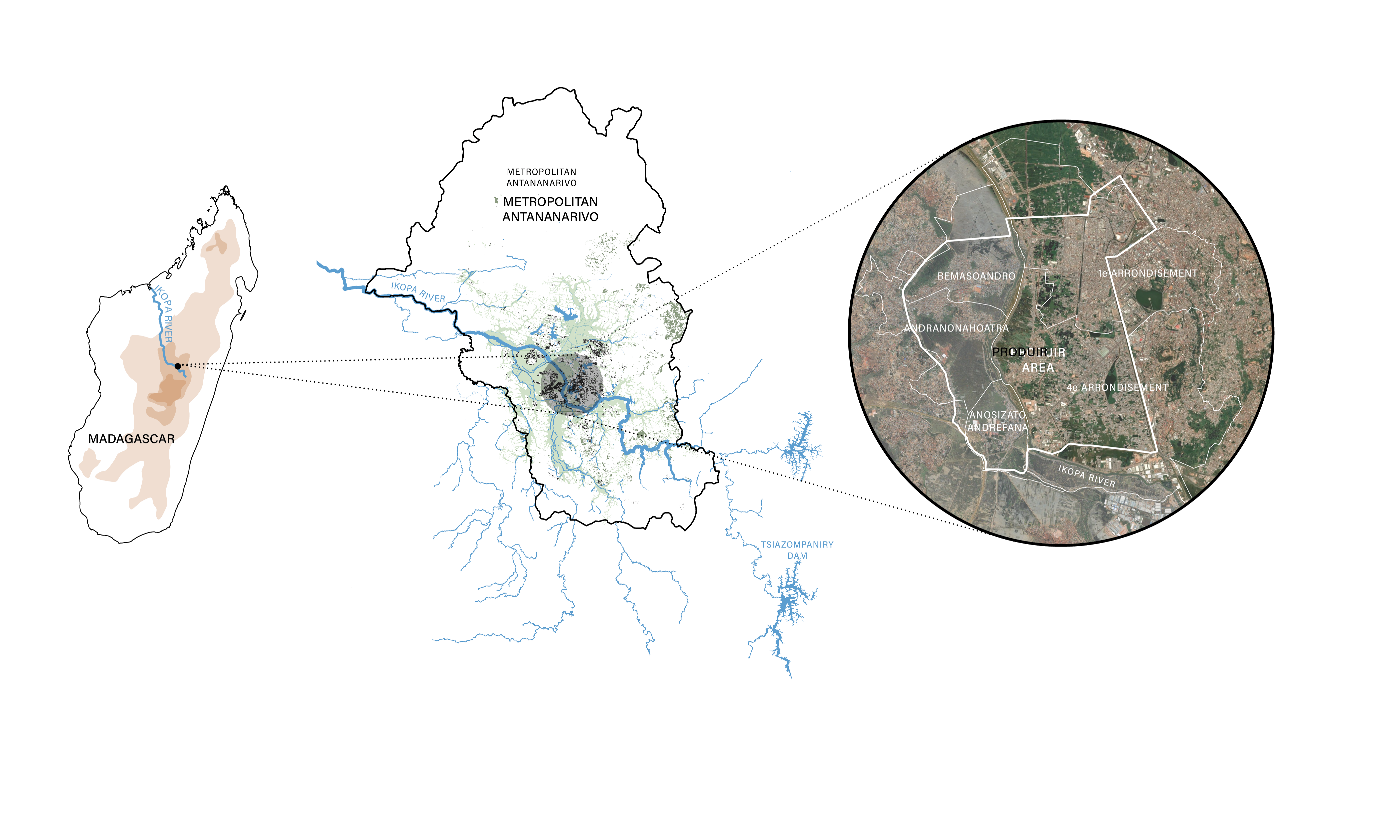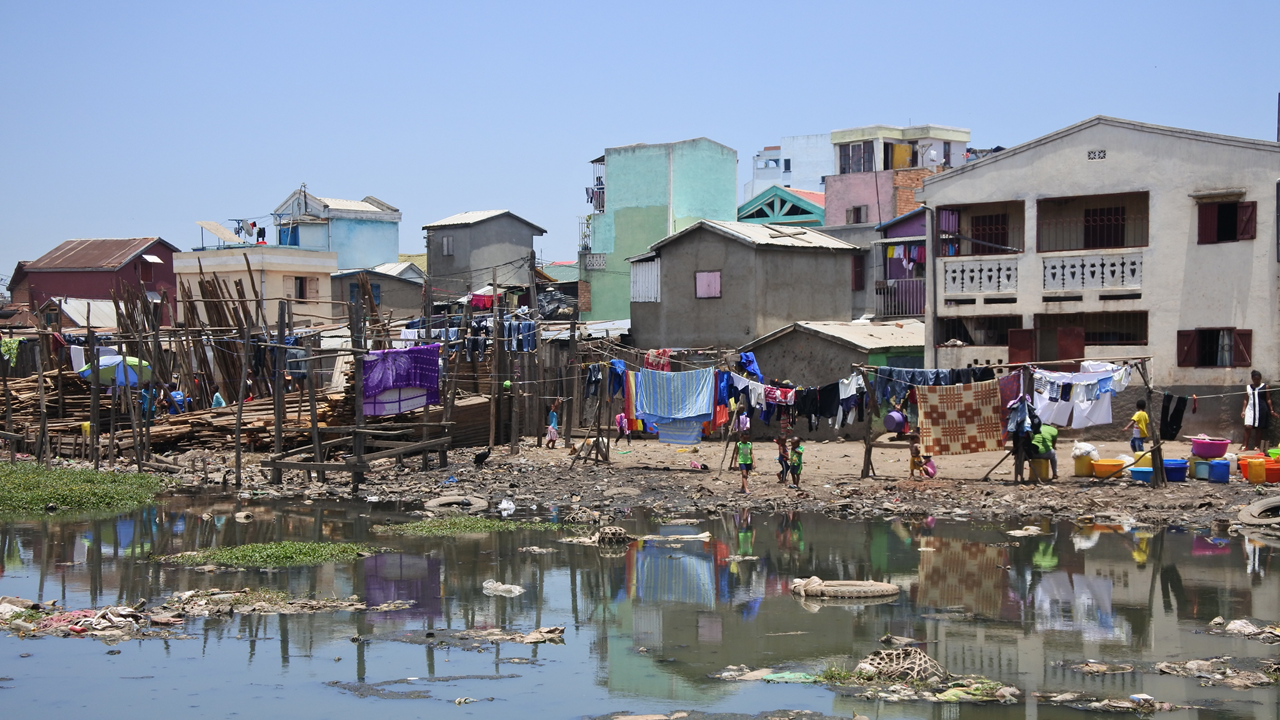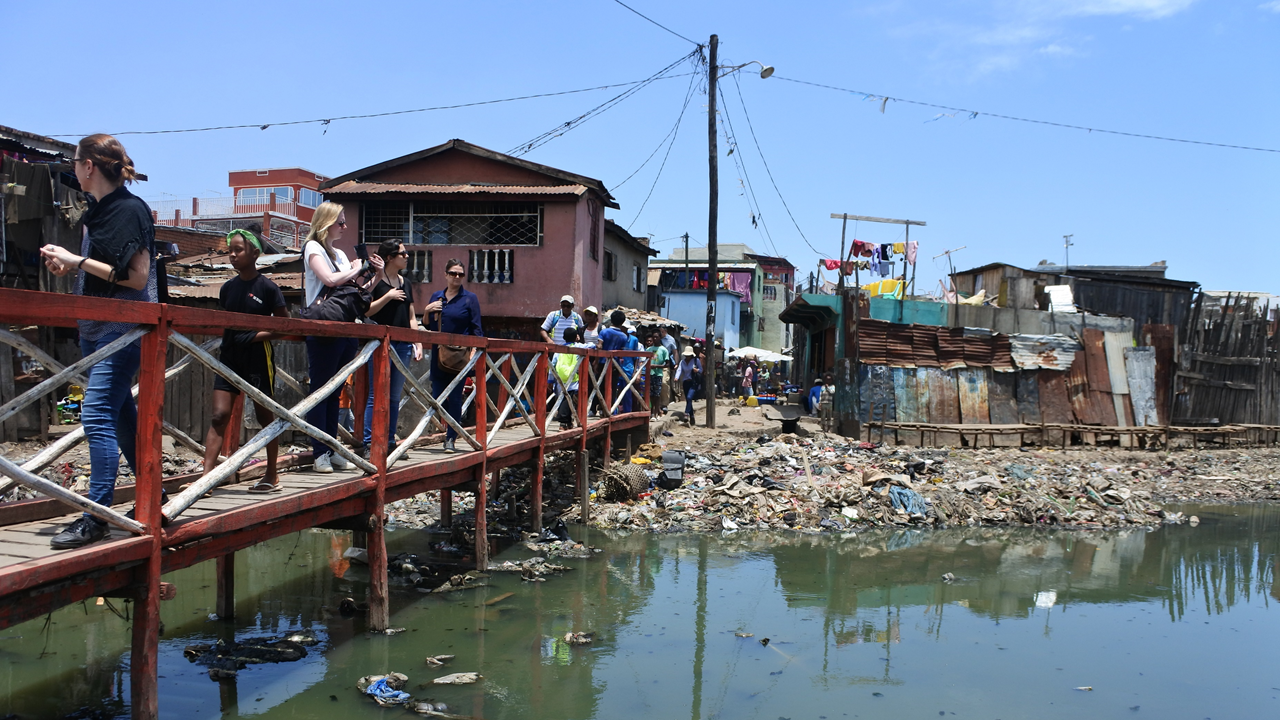Nature-based solutions and disaster evacuation planning to increase flood resilience in Antananarivo, Madagascar
The inhabitants of Antananarivo, in Madagascar, are currently struggling with diverse water-related issues, like pluvial floods and water pollution, which are particularly damaging for vulnerable communities within the city. The government of Madagascar acknowledges these issues and has signed a Country Partnership Framework with the World Bank, to address them. As part of this agreement, the PRODUIR (Integrated Urban Development and Resilience Project) is being implemented between 2018 and 2023. Research institute Deltares and partners Royal HaskoningDHV, BoschSlabbers and Evolutis, performed a comprehensive assessment and pre-feasibility study on urban resilience adaptation strategies for the area. These strategies integrated nature-based solutions and disaster evacuation planning to increase flood resilience and enhance living conditions in low-income neighbourhoods.

The project development objective of PRODUIR is to enhance urban living conditions and flood resilience in selected low-income neighborhoods of Antananarivo, located predominantly along the floodplains of the Ikopa river. This study contributes to this objective by focusing on the design and assessment of Nature-based solutions (NbS) for disaster evacuation and flood risk reduction.
The process
The study was organized into four tasks - inception, diagnostic, scenario building and synergies and prefeasibility - which resulted in a city strategy, plans for three pilot sites and recommendations for the implementation and upscaling of those pilots. The study also included continuous stakeholder and community engagement, to ensure the robustness of the study.
During the inception, we defined the methodology, approach, and activities of the technical assignment, as well as the community engagement activities, where we discussed with stakeholders to reach a shared understanding of the problem. Besides, we conducted the first field visit, to get insight into the project area.
Then, we conducted the diagnostic, where we aimed to understand the current situation, identify challenges and opportunities, and foresee potential solutions. From the diagnostic, we concluded that to reduce flood risk in the floodplains of Antananarivo, we need to produce a strategic, versatile, multiscale and upscalable intervention, able to increase the storage and discharge capacity of the area. This should include local capacity building and raising awareness in the community.


Following the diagnostic, we worked with scenarios and synergies, to explore how different measures and sites could be part of a disaster evacuation plan. We focused on on-site and off-site refuges, connected by a network of evacuation routes, where NbS and other complementary measures could be implemented.
Finally, we conducted the prefeasibility assessment, to develop a project-wide approach, to guide stakeholders at different scales in the implementation and upscaling of NbS and complementary measures for flood risk reduction and disaster evacuation. We studied preselected sites, leading to the selection of three pilot sites (see interactive map below). We assessed the effectiveness of various measures, both NbS and others, which we used to develop a plan for each one of the sites.
Design guidelines for the upscaling of these pilots were developed, as well as general strategies for the implementation, maintenance, communication, and monitoring of the measures. The interactive map below shows in a black boundary indicates the PRODUIR (Integrated Urban Development and Resilience Project) area. The blue areas represent areas of high flood risk. White circles indicate the location of preselected sites and the red circles are the location of the three pilot sites. The video below shows a visualisation of the proposed Nbs infrastructure at Site 9.
Conclusion
The main conclusion from this prefeasibility assessment is that complex challenges should be addressed by simple solutions that are community-based, easy to implement and to replicate. Moreover, education and a suitable governance structure are essential for the design, implementation, and maintenance of the successful low-tech intervention for flood risk reduction and disaster evacuation. Please visit our project-specific i-report where the project results are described and visualized in more detail.
Contact us:
Tjeerd Driessen
tjeerd.driessen@rhdhv.com
Rene Pearson
rene.pearson@rhdhv.com
Parties involved:
